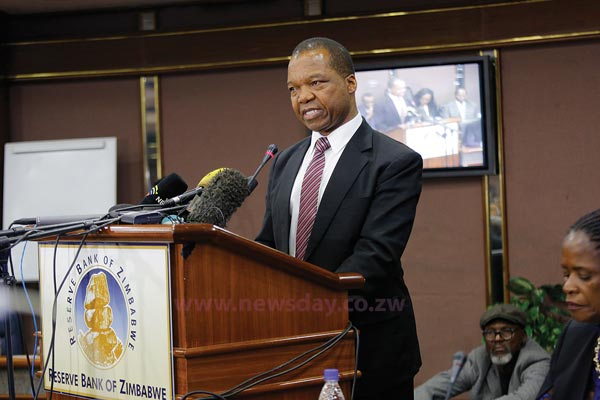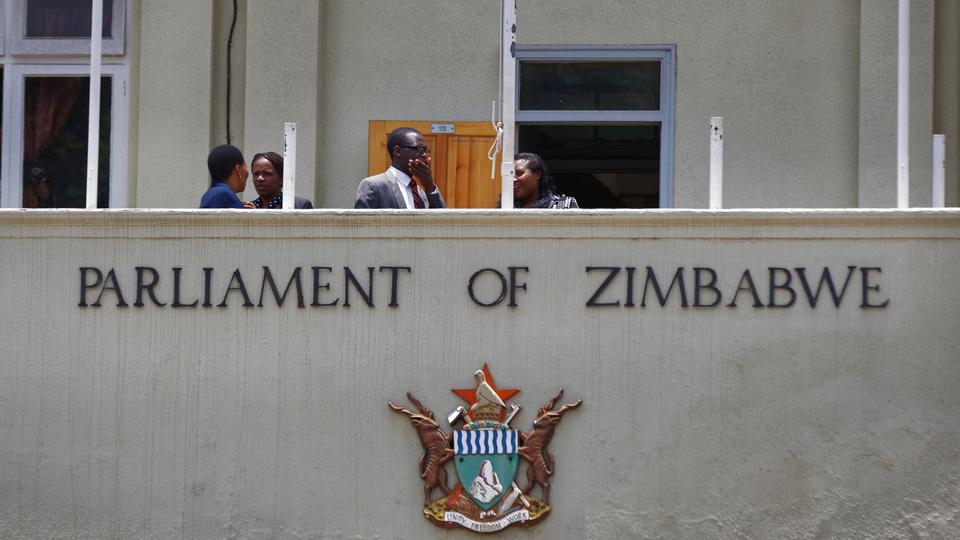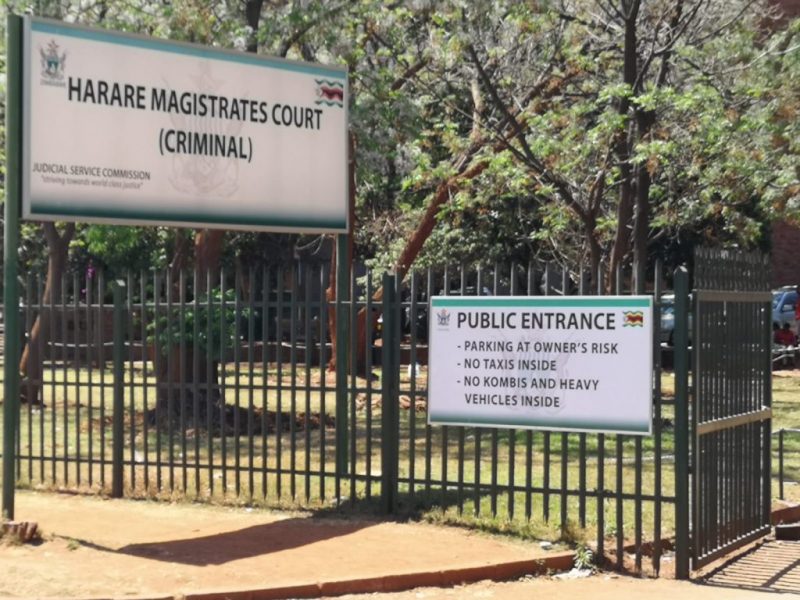
BY FIDELITY MHLANGA
A COCKTAIL of measures unveiled by Reserve Bank of Zimbabwe (RBZ) governor John Mangudya in his midterm monetary policy statement fall short of stimulating economic growth and market confidence as the economy continues in freefall.
Mangudya last Friday announced a raft of measures which include broadening money supply through an injection of notes and coins, introduction of a US dollar-denominated bond market and increasing bank capital requirements. He also reviewed upwardly interest rates.
Introduction of US$-denominated savings bonds
Introduced in September 2017 to mop excess liquidity from the market, savings bonds mopped up $1,96 billion worth of liquidity as of December 2018.
As such the move has been attributed as one of the reasons behind the decline in annual growth in money supply in the economy. Last week, Mangudya announced a new regime of savings bonds denominated in US dollars.
The bond has an interest rate of 7,5% per year; minimum tenure of one year, tax exemption, in line with government policy, liquid asset status, tradable and acceptable as collateral for overnight accommodation by the RBZ.
The motive to introduce a forex-denominated savings bond might have come after witnessing a paradigm shift in the appetite for the bond following the promulgation of local currency in June this year.
- Chamisa under fire over US$120K donation
- Mavhunga puts DeMbare into Chibuku quarterfinals
- Pension funds bet on Cabora Bassa oilfields
- Councils defy govt fire tender directive
Keep Reading
To whet market appetite, Mangudya announced that the interest rate on the Zimbabwe dollar savings bonds shall soon be reviewed to account for developments on the domestic Treasury Bill market and to motivate banks to provide meaningful return on local currency deposits.
Economist Kipson Gundani said by introducing a US bond market, Mangudya was putting a vote of no confidence on the recently introduced Zimdollar, adding this was testament to the waning local currency reception.
“To me this is a vote of no confidence to the local currency by the governor. Why giving an option to invest in US dollar when we have a local currency?” Gundani queried.
“To me, it signals depreciation of local currency. The sad reality is that the local currency is weak and does not inspire confidence and savings. So RBZ realised that for them to inspire savings they have to offer a bond which is denominated in US dollars,” he said.
Another economist, Prosper Chitambara, concurred, saying by introducing US dollar savings bond, government was re-dollarising the economy.
“Government is re-dollarising the economy. You cannot issue a bond with a currency which is not yours. It’s sort of dollarisation,” he said.
Cash crisis
The cash crisis became more pronounced in 2016, a result of excessive money creation through Treasury Bills and overdrafts. Soft money, therefore, became dominant to the detriment of physical cash. Since then, authorities have failed to stem what has now become a chronic cash crisis.
Mangudya said the central bank would continue to inject additional notes and coins on a gradual basis, to support production and lessen the inconvenience caused by physical cash shortages to the transacting public.
This is despite past similar numerous vain promises by authorities. Citizens are bearing the brunt of cash shortages as they are forking out 60% to get cash from mobile money agencies.
Generally, cash must be 15% of the total money circulating in the economy but is currently below that threshold.
“To me it points to the fact that we don’t have the optimum cash in circulation. Right now the cash in circulation is averaging 7% against the 10%-15% threshold. We have about $600 million cash in circulation against total deposits of about $10 billion. I hope they will inject the money by monetising the existing RTGS [real time gross settlement] balances.
“If they introduce the fresh notes in circulation, the conclusion from economic actors is they will be money printing. Economic actors can take positions that are inflationary. We need to deal with the arbitrage behaviour in the economy fuelled through mobile money agencies,” Gundani said.
Capitalisation of banks
In a desperate bid to address banks’ liquidity, the central bank increased the capital requirement from the $100 million which was US denominated to ZW$200 million. The move was done in line with the devaluation of value which came after the introduction of local currency which dented banks’ capacity to lend.
According to the report by brokerage research firm IH securities titled The Zimbabwe Banking sector: Navigating a Challenging Monetary Space, released recently the currency reforms created a mismatch between foreign currency-denominated assets and liabilities on some banks’ balance sheets. The distortions have stifled the financial institutions’ lending capacity, the report says.
Gundani said increase in capital requirement was a drop in an ocean as such will not provide the much-needed cushioning for banking sector stability.
“It’s a nominal increase. The $100 million was in US dollar terms. Now US$1 is equivalent to ZW$16. With this in mind, banks will be capitalised in nominal terms, but will be very weak to carry out their duties. This puts the financial services sector into a shaky mode and threatens the protection of depositors funds,” Gundani said.
Interest rates hike
Mangudya introduced a 70% bank interest rate from 50% to take account of developments on inflation and the exchange rate. He said he expected inflation, which was at 176% end of June, to start declining.
Chitambara said the interest rate would haunt the productive sector.
“It’s a double-edged sword. On the other side, they want to stop speculative lending, but this will genuinely hurt production,” he said.
Chitambara’s sentiments were also echoed by Gundani, who said: “The 70% hike is chilling. If you look at the lends to deposit ratio in June 2018, it was 41% and it’s now 37%.This means there is no creditor available.
“This will choke demand and we will see a downward spiral of productive borrowing. We need to come up with rates that incentivise productive borrowing. We need solutions that stabilise inflation and come up with proper lending rates.”











